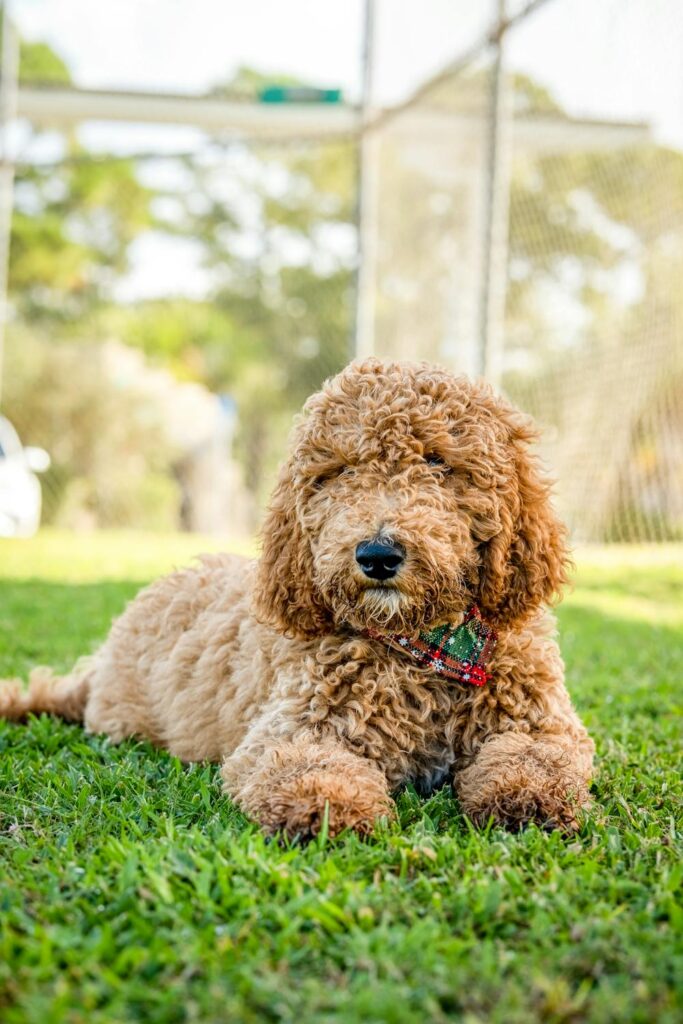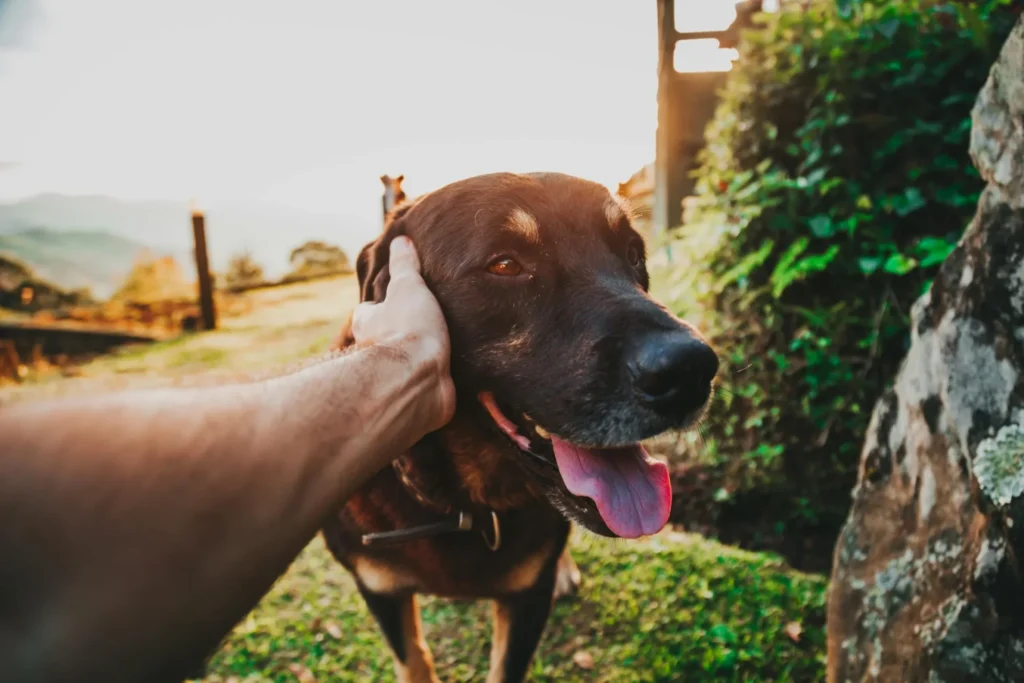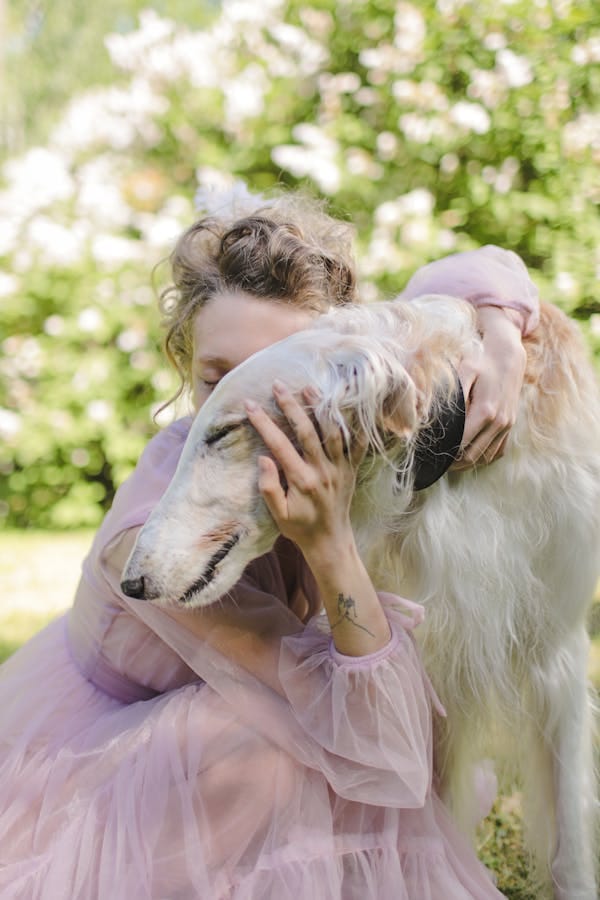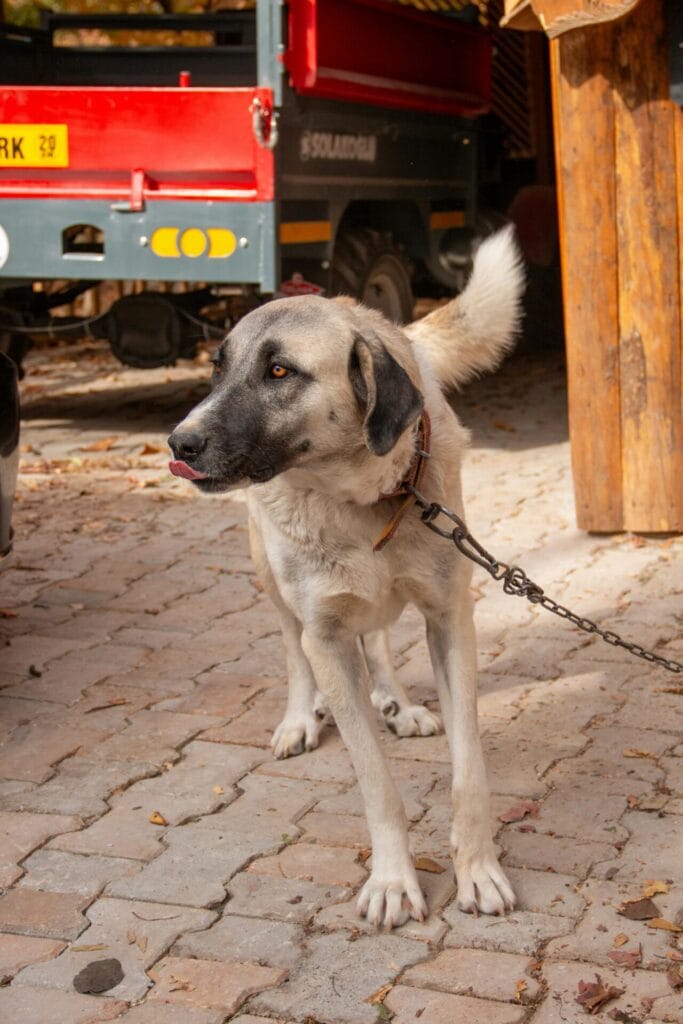- Introduction: Understanding Dog Tie-Outs and Their Impact on Canine Well-being 🐾
- What Is a Dog Tie-Out? 🔗
- The History of Dog Tie-Outs: From Practical Solution to Controversial Practice 📜
- Why Do People Use Dog Tie-Outs? 🤷♂️
- The Anatomy of a Dog Tie-Out Cable 🔍
- Types of Dog Tie-Outs 🏷️
- What Is a Tie-Out Accident? 😱
- Why Are Tie-Outs Dangerous? ⚠️
- Are Dog Tie-Outs Safe? The Great Debate 🤔
- Factors Affecting Tie-Out Safety 📊
- Tie-Out Safety by Dog Breed and Age 🐕🦺
- Alternatives to Dog Tie-Outs: Safer Options for Your Furry Friend 🏡
- The Legal Landscape: Tie-Out Laws and Regulations 📜
- The Psychological Impact of Tie-Outs on Dogs 🧠
- Training and Tie-Outs: A Complicated Relationship 🎓
- The Role of Exercise in Dog Well-being 🏃♂️
- Socialization: The Missing Piece in Tie-Out Scenarios 🐾
- The Environmental Impact of Dog Tie-Outs 🌍
- Tie-Outs and Different Dog Personalities 😊😠😨
- The Economic Aspect: Tie-Outs vs. Other Solutions 💰
- The Future of Dog Containment: Innovations and Trends 🚀
- Case Studies: Real-Life Tie-Out Experiences 📖
- Expert Opinions: What Veterinarians and Behaviorists Say 👨⚕️👩⚕️
- FAQs: Your Top Tie-Out Questions Answered ❓
- Conclusion: Embracing Safe and Enriching Dog Care 🌟
- Taking Action: Steps Towards Better Dog Care 🐾
- The Emotional Bond: Why Safe Containment Matters ❤️
- Breed-Specific Considerations 🐩🐕🦺🐾
- Small Breeds (e.g., Chihuahuas, Yorkies, Pomeranians)
- Medium Breeds (e.g., Beagles, Cocker Spaniels, Bulldogs)
- Large Breeds (e.g., Labrador Retrievers, German Shepherds, Golden Retrievers)
- Giant Breeds (e.g., Great Danes, Saint Bernards, Mastiffs)
- High-Energy Breeds (e.g., Border Collies, Australian Shepherds, Jack Russell Terriers)
- Brachycephalic Breeds (e.g., Pugs, French Bulldogs, Boxers)
- The Role of Technology in Modern Dog Care 🖥️
- Environmental Enrichment: Beyond Physical Containment 🌳
- The Impact of Exercise on Behavior 🏃♂️
- The Economics of Dog Care: A Long-Term Perspective 💼
- Building a Community of Responsible Dog Owners 🤝
- The Future of Dog Care: Trends and Predictions 🔮
- Conclusion: Embracing a Brighter Future for Our Canine Companions 🌟
Introduction: Understanding Dog Tie-Outs and Their Impact on Canine Well-being 🐾
Dogs are more than just pets; they’re cherished members of our families. As responsible pet owners, we’re always looking for ways to keep our furry friends safe and happy. One method that’s been around for years is the dog tie-out. But what exactly is it, and is it the best option for your four-legged companion? 🤔
In this comprehensive guide, we’ll dive deep into the world of dog tie-outs, exploring their uses, benefits, risks, and alternatives. We’ll cover everything from the basics to advanced considerations, ensuring you have all the information you need to make the best decision for your canine buddy. So, let’s unleash this topic and fetch some knowledge! 🎓🐶
What Is a Dog Tie-Out? 🔗
A dog tie-out, also known as a tether, is a restraint system used to keep dogs contained in a specific area outdoors. It typically consists of a cable, rope, or chain attached to a fixed point on one end and the dog’s collar or harness on the other. The idea is to give dogs some freedom to roam while keeping them from wandering off or getting into trouble.

Components of a Dog Tie-Out System:
- Anchor: A secure point (tree, stake, or building) to attach the tie-out
- Cable: The main line that connects the anchor to the dog
- Swivel: Prevents tangling as the dog moves around
- Clips: Connect the cable to the anchor and the dog’s collar or harness
Dog tie-outs come in various lengths and strengths, designed to accommodate different dog sizes and breeds. They’re often used in yards without fences or as a temporary solution when traveling.
The History of Dog Tie-Outs: From Practical Solution to Controversial Practice 📜
Dog tie-outs have been around for decades, originally emerging as a practical solution for pet owners without fenced yards. They allowed dogs to enjoy outdoor time while remaining under control. However, as our understanding of canine behavior and welfare has evolved, so has the perception of tie-outs.
| Era | Perception of Tie-Outs | Societal Context |
|---|---|---|
| 1950s-1970s | Widely accepted | Limited awareness of potential risks |
| 1980s-1990s | Growing concerns | Increased focus on animal welfare |
| 2000s-Present | Controversial | Better understanding of canine needs |
Why Do People Use Dog Tie-Outs? 🤷♂️
Despite the controversy, some pet owners still opt for tie-outs. Here’s why:
- Cost-effective: Cheaper than installing a fence
- Convenience: Quick setup and takedown
- Versatility: Can be used in various locations
- Space limitations: Suitable for small yards or shared spaces
- Temporary solution: Useful for camping or traveling
However, it’s crucial to weigh these benefits against the potential risks and drawbacks.
The Anatomy of a Dog Tie-Out Cable 🔍
Let’s break down the components of a typical dog tie-out cable:
- Core: Usually made of steel or high-strength synthetic fibers
- Coating: Often vinyl or plastic for weather resistance and visibility
- Swivel: Allows 360-degree movement without tangling
- Clips: Heavy-duty clasps for secure attachment
- Shock absorber: Some models include this to reduce sudden jerks
Types of Dog Tie-Outs 🏷️
There are several types of tie-outs available, each with its own pros and cons:
- Cable tie-outs: Durable and weather-resistant
- Chain tie-outs: Strong but heavy and can be noisy
- Overhead trolley systems: Allows more freedom of movement
- Retractable tie-outs: Adjustable length for varied environments
- Stake systems: Portable and easy to install in different locations
What Is a Tie-Out Accident? 😱
A tie-out accident refers to any incident where a dog is harmed or put at risk due to being tethered. These accidents can range from minor injuries to fatal incidents. Understanding the potential dangers is crucial for any pet owner considering using a tie-out system.
Common Tie-Out Accidents:
- Strangulation from tangled cables
- Neck injuries from sudden stops
- Overheating due to lack of shade or water access
- Attacks by other animals or humans
- Escape and subsequent traffic accidents
Why Are Tie-Outs Dangerous? ⚠️
While tie-outs may seem like a simple solution, they pose several risks to dogs:
- Physical injuries: Sudden movements can cause neck, back, or leg injuries
- Psychological stress: Being restrained can lead to anxiety and fear
- Aggression: Feeling trapped may increase defensive behaviors
- Neglect: Out of sight, out of mind – dogs may be left unattended for too long
- Exposure: Limited ability to seek shelter from extreme weather
- Predator vulnerability: Restrained dogs can’t escape from threats
- Entanglement: Risk of choking or cutting off circulation
Are Dog Tie-Outs Safe? The Great Debate 🤔
The safety of dog tie-outs is a hotly debated topic among pet owners, veterinarians, and animal welfare advocates. Let’s look at both sides of the argument:
Arguments for Tie-Out Safety:
- Prevents dogs from running away or getting into traffic
- Allows outdoor time for dogs in unfenced areas
- Can be safe if used properly and with constant supervision
Arguments Against Tie-Out Safety:
- Risk of physical injury and psychological distress
- Potential for neglect and improper use
- Limited exercise and socialization opportunities
- Vulnerability to external threats
Factors Affecting Tie-Out Safety 📊
Several factors influence how safe (or unsafe) a tie-out can be:
- Duration of use: Shorter periods are generally safer
- Supervision level: Constant monitoring reduces risks
- Dog’s temperament: Some dogs handle restraint better than others
- Environmental conditions: Weather, terrain, and nearby hazards matter
- Quality of equipment: Better materials and design improve safety
- Proper sizing: Matching the tie-out to the dog’s size is crucial
- Training: Dogs accustomed to tie-outs may handle them better
Tie-Out Safety by Dog Breed and Age 🐕🦺
Different breeds and age groups have varying needs and tolerances when it comes to tie-outs. Here’s a brief overview:
| Breed Size | Age Group | Tie-Out Suitability | Special Considerations |
|---|---|---|---|
| Small | Puppy | Low | Easily tangled, vulnerable |
| Small | Adult | Moderate | Need frequent checks |
| Medium | Puppy | Low | Risk of injury from sudden movements |
| Medium | Adult | Moderate | Proper strength cable needed |
| Large | Puppy | Very Low | High risk of injury |
| Large | Adult | Low-Moderate | Strong cables required, higher risk |
| Giant | All Ages | Very Low | Not recommended due to strength |
Best and Worst Dog Breeds for Tie-Outs
While no breed is truly ideal for tie-outs, some may tolerate them better than others. However, it’s important to note that individual temperament varies greatly within breeds.
Breeds that may tolerate tie-outs better (with proper use and supervision):
- Labrador Retrievers
- Golden Retrievers
- Beagles
- Basset Hounds
Breeds that are particularly unsuitable for tie-outs:
- Huskies (prone to escape)
- Pit Bulls (strong pullers)
- Chow Chows (independent nature)
- German Shepherds (high energy and intelligence)
Remember, these are generalizations, and every dog is an individual. The safest approach is to avoid tie-outs altogether and explore alternatives.
Alternatives to Dog Tie-Outs: Safer Options for Your Furry Friend 🏡
Given the risks associated with tie-outs, many pet owners and experts recommend alternatives. Here are some safer options to consider:
- Fenced yard: The gold standard for outdoor dog safety
- Supervised outdoor time: Short, attended play sessions
- Dog runs: Enclosed areas for exercise and play
- Indoor exercise: Puzzle toys, treadmills, and interactive games
- Regular walks: Structured outdoor time on a leash
- Doggy daycare: Socialization and exercise in a controlled environment
- Pet sitters: Professional care when you’re away
Comparison of Dog Containment Options
| Method | Safety | Exercise | Socialization | Convenience | Cost |
|---|---|---|---|---|---|
| Tie-Out | Low | Limited | Low | High | Low |
| Fenced Yard | High | High | Moderate | High | High |
| Supervised Play | High | High | High | Moderate | Low |
| Dog Run | High | Moderate | Low | Moderate | Moderate |
| Indoor Exercise | High | Moderate | Low | High | Low-Moderate |
| Regular Walks | High | High | High | Moderate | Low |
| Doggy Daycare | High | High | High | Moderate | High |
The Legal Landscape: Tie-Out Laws and Regulations 📜
As awareness of the risks associated with tie-outs has grown, many jurisdictions have implemented laws and regulations governing their use. These laws vary widely by location, but often include:
- Limits on tethering duration
- Requirements for proper shelter and water access
- Restrictions on tether length and type
- Bans on tethering in extreme weather conditions
Always check your local laws before considering a tie-out system. Many areas are moving towards stricter regulations or outright bans on prolonged tethering.
The Psychological Impact of Tie-Outs on Dogs 🧠
Beyond the physical risks, tie-outs can have significant psychological effects on dogs. These intelligent, social animals thrive on interaction and freedom of movement. Prolonged tethering can lead to:
- Increased anxiety and stress
- Development of repetitive behaviors (e.g., pacing)
- Aggression due to feeling trapped or threatened
- Depression from lack of stimulation
- Reduced trust in humans
Training and Tie-Outs: A Complicated Relationship 🎓
Some argue that tie-outs can be used as a training tool, but this approach is controversial. While brief, supervised tethering might help teach a dog to stay in one area, prolonged use can lead to negative associations and behavior problems.
If you must use a tie-out for short periods, always pair it with positive experiences:
- Offer treats and praise
- Provide engaging toys
- Keep sessions short and supervised
- Never use it as punishment
Remember, positive reinforcement training methods are generally more effective and kinder than restrictive measures like tie-outs.
The Role of Exercise in Dog Well-being 🏃♂️
One of the main issues with tie-outs is that they limit a dog’s ability to exercise properly. Regular exercise is crucial for canine health and happiness. It helps:
- Maintain a healthy weight
- Reduce behavior problems
- Improve cardiovascular health
- Strengthen the bond between dog and owner
Instead of relying on tie-outs, focus on providing structured exercise through walks, play sessions, and interactive games.
Socialization: The Missing Piece in Tie-Out Scenarios 🐾
Dogs are social creatures that benefit greatly from interaction with humans and other dogs. Tie-outs severely limit socialization opportunities, which can lead to:
- Fear or aggression towards strangers
- Difficulty interacting with other dogs
- Reduced adaptability to new situations
- Increased anxiety in social settings
Prioritize socialization through supervised play dates, obedience classes, and regular outings to dog-friendly locations.
The Environmental Impact of Dog Tie-Outs 🌍
While not often discussed, tie-outs can have environmental consequences:
- Soil erosion from repetitive movement in one area
- Damage to trees or structures used as anchors
- Plastic waste from worn-out cables and accessories
Opting for eco-friendly containment solutions, like natural fencing or supervised outdoor time, can help minimize these impacts.
Tie-Outs and Different Dog Personalities 😊😠😨
Just as humans have diverse personalities, so do dogs. Some may tolerate tie-outs better than others, but it’s important to consider your dog’s unique traits:
- High-energy dogs may become frustrated and destructive
- Anxious dogs might develop more severe stress responses
- Independent breeds could see tie-outs as a challenge to overcome
- Social dogs may suffer from lack of interaction
Understanding your dog’s personality is key to making informed decisions about their care and containment.
The Economic Aspect: Tie-Outs vs. Other Solutions 💰
While tie-outs are often chosen for their low cost, it’s important to consider the long-term economic implications:
| Solution | Initial Cost | Ongoing Costs | Potential Added Costs |
|---|---|---|---|
| Tie-Out | Low | Low (replacements) | Vet bills from injuries |
| Fencing | High | Low (maintenance) | Property value increase |
| Dog Walker | N/A | Moderate-High | Improved dog behavior |
| Doggy Daycare | N/A | High | Socialization benefits |
Remember, the cheapest option isn’t always the most cost-effective in the long run, especially when considering your dog’s health and well-being.
The Future of Dog Containment: Innovations and Trends 🚀
As our understanding of dog behavior and welfare evolves, so do the solutions for keeping them safe and happy. Emerging trends include:
- GPS-enabled smart collars for tracking
- App-controlled electronic fence systems
- Robotic pet sitters for interaction during owner absence
- Virtual reality experiences for indoor dogs
While technology offers exciting possibilities, nothing replaces the care, attention, and love that hands-on pet ownership provides.
Case Studies: Real-Life Tie-Out Experiences 📖
To better understand the real-world implications of tie-outs, let’s look at a few case studies:
- Max the Husky: Escaped from his tie-out and was hit by a car. Survived but required expensive surgery.
- Bella the Beagle: Developed severe anxiety after prolonged tie-out use. Needed behavioral therapy to recover.
- Rocky the Rottweiler: Became aggressive towards visitors while on a tie-out. Owner switched to a fenced yard, resolving the issue.
These stories highlight the potential risks and the importance of finding safer alternatives.
Expert Opinions: What Veterinarians and Behaviorists Say 👨⚕️👩⚕️
The consensus among animal welfare professionals is clear: tie-outs are not recommended as a primary means of dog containment. Here’s what some experts say:
“Tie-outs can lead to physical injuries and psychological distress. We always recommend safer alternatives that allow for proper exercise and socialization.” – Dr. Sarah Johnson, DVM
“Dogs on tie-outs often develop behavior problems due to frustration and lack of mental stimulation. It’s crucial to find more enriching ways to keep them safe and happy.” – Mark Thompson, Certified Dog Behaviorist
FAQs: Your Top Tie-Out Questions Answered ❓
Q: How long can I leave my dog on a tie-out?
A: It’s best to avoid tie-outs altogether. If you must use one, keep sessions very short (15-30 minutes max) and always supervised.
Q: Are retractable leashes a good alternative to tie-outs?
A: While better for walks, retractable leashes aren’t suitable for unsupervised containment. They can cause similar injury risks if used improperly.
Q: My dog seems happy on the tie-out. Is it really that bad?
A: Even if your dog appears content, tie-outs pose significant risks. There are always safer and more enriching alternatives available.
Q: Can I use a tie-out for puppies?
A: Tie-outs are especially dangerous for puppies, who are more vulnerable to injury and need constant supervision and socialization.
Q: What’s the best alternative to a tie-out for apartment dwellers?
A: Regular walks, indoor exercise, and doggy daycare are great options for dogs living in apartments.
Conclusion: Embracing Safe and Enriching Dog Care 🌟
As we’ve explored the world of dog tie-outs, it’s clear that while they may seem like a simple solution, they come with significant risks and drawbacks. The love we have for our canine companions calls us to seek out safer, more enriching ways to keep them happy and healthy.
Remember, every dog is unique, with individual needs for exercise, socialization, and mental stimulation. By prioritizing these needs and exploring alternatives to tie-outs, we can create a safer, happier environment for our furry friends.
Let’s recap the key points we’ve covered:
- Tie-outs pose significant physical and psychological risks to dogs 🚫
- There are numerous safer alternatives available, from fenced yards to structured activities 🏡
- The legal landscape is shifting towards stricter regulations on tethering 📜
- Understanding your dog’s individual needs is crucial for their well-being 🐕
As responsible pet owners, it’s our duty to make informed decisions that prioritize our dogs’ safety and happiness. By moving away from tie-outs and embracing more positive containment and exercise methods, we can strengthen our bond with our canine companions and ensure they live their best lives.
Taking Action: Steps Towards Better Dog Care 🐾
Now that we’ve explored the ins and outs of dog tie-outs, let’s look at some actionable steps you can take to improve your dog’s quality of life:
- Assess your current setup: If you’re using a tie-out, critically evaluate why and consider safer alternatives.
- Create an exercise plan: Develop a routine that includes regular walks, playtime, and mental stimulation activities.
- Invest in your dog’s environment: Whether it’s fencing your yard or creating an indoor play area, make your space dog-friendly and safe.
- Educate yourself: Stay informed about dog behavior, training techniques, and local pet laws.
- Connect with other dog owners: Join local groups or online communities to share experiences and advice.
- Consult professionals: Work with veterinarians, trainers, or behaviorists to address any specific issues your dog may have.
- Be an advocate: Spread awareness about the risks of tie-outs and promote responsible pet ownership in your community.
The Emotional Bond: Why Safe Containment Matters ❤️
At the heart of this discussion is the special bond between humans and dogs. Our canine friends offer us unconditional love, companionship, and joy. In return, they deserve our best efforts to ensure their safety, comfort, and happiness.
By moving away from tie-outs and embracing more positive methods of care and containment, we’re not just improving our dogs’ physical safety – we’re nurturing the emotional connection that makes the human-canine relationship so special.
Breed-Specific Considerations 🐩🐕🦺🐾
While we’ve touched on breed differences earlier, let’s delve a bit deeper into how various dog types might be affected by tie-outs and what alternatives might work best for them:
Small Breeds (e.g., Chihuahuas, Yorkies, Pomeranians)
- Tie-out risks: Easily tangled, vulnerable to predators
- Better options: Indoor play areas, short supervised outdoor sessions, puppy playpens
Medium Breeds (e.g., Beagles, Cocker Spaniels, Bulldogs)
- Tie-out risks: Moderate pull strength can lead to injuries
- Better options: Fenced yards, regular walks, interactive toys
Large Breeds (e.g., Labrador Retrievers, German Shepherds, Golden Retrievers)
- Tie-out risks: Strong enough to break free, higher risk of injury due to force
- Better options: Large fenced areas, structured exercise routines, agility training
Giant Breeds (e.g., Great Danes, Saint Bernards, Mastiffs)
- Tie-out risks: Extreme strength makes any restraint dangerous
- Better options: Spacious fenced yards, controlled walks, swimming (for breeds that enjoy it)
High-Energy Breeds (e.g., Border Collies, Australian Shepherds, Jack Russell Terriers)
- Tie-out risks: Frustration leading to destructive behavior
- Better options: Agility courses, interactive games, long walks or runs
Brachycephalic Breeds (e.g., Pugs, French Bulldogs, Boxers)
- Tie-out risks: Overheating, respiratory distress
- Better options: Climate-controlled indoor play, short supervised outdoor sessions
Remember, these are general guidelines. Always consider your individual dog’s personality, health, and needs when deciding on the best care and containment methods.
The Role of Technology in Modern Dog Care 🖥️
As we move away from outdated methods like tie-outs, technology is playing an increasingly important role in keeping our dogs safe and happy. Let’s explore some innovative solutions:
- GPS Tracking Collars: Monitor your dog’s location in real-time
- Smart Feeders: Dispense food on a schedule, even when you’re away
- Pet Cameras: Keep an eye on your dog and interact remotely
- Automated Ball Launchers: Provide exercise and mental stimulation
- Smart Door Systems: Allow your dog controlled access to a safe outdoor area
- Virtual Fences: Create boundaries without physical barriers
While these technologies can be helpful, they should complement, not replace, hands-on care and interaction with your dog.
Environmental Enrichment: Beyond Physical Containment 🌳
One of the main drawbacks of tie-outs is that they limit a dog’s ability to explore and engage with their environment. Environmental enrichment is crucial for a dog’s mental and emotional well-being. Here are some ideas to create a stimulating environment for your dog:
- Sensory Gardens: Plant dog-safe herbs and flowers for sniffing adventures
- Digging Zones: Designate a safe area for dogs who love to dig
- Obstacle Courses: Create a backyard agility setup
- Water Play: Add a shallow pool or sprinkler for water-loving dogs
- Viewing Spots: Provide elevated areas for dogs to survey their surroundings
- Puzzle Feeders: Hide treats in toys to encourage problem-solving
- Rotating Toys: Keep things interesting by swapping out toys regularly
By focusing on enrichment, we can provide our dogs with the mental and physical stimulation they need without resorting to restrictive measures like tie-outs.
The Impact of Exercise on Behavior 🏃♂️
One of the arguments sometimes made in favor of tie-outs is that they allow dogs to “burn off energy.” However, the type and quality of exercise matter just as much as the quantity. Let’s look at how proper exercise can positively impact behavior:
| Behavior Issue | How Exercise Helps | Better Than Tie-Outs Because |
|---|---|---|
| Hyperactivity | Releases pent-up energy | Allows for varied, full-body movement |
| Destructiveness | Provides mental stimulation | Engages mind and body purposefully |
| Excessive Barking | Reduces boredom and frustration | Allows for social interaction and exploration |
| Anxiety | Boosts confidence and reduces stress | Creates positive associations with activity |
| Aggression | Improves mood and socialization | Allows for controlled interactions |
By prioritizing quality exercise and engagement, we can address many behavior issues that tie-outs might exacerbate.
The Economics of Dog Care: A Long-Term Perspective 💼
While the initial cost of a tie-out might be low, it’s important to consider the long-term economic impact of your dog care choices. Let’s break it down:
| Aspect | Tie-Out Approach | Comprehensive Care Approach |
|---|---|---|
| Initial Cost | Low (tie-out equipment) | Higher (fencing, training, etc.) |
| Ongoing Costs | Low (replacement equipment) | Moderate (activities, toys, possible daycare) |
| Veterinary Costs | Potentially high (injury treatment) | Generally lower (preventive care) |
| Property Value | No impact or negative | Potential increase with proper fencing |
| Quality of Life | Limited | High |
| Long-Term Savings | Minimal | Significant (fewer health issues, better behavior) |
Investing in your dog’s well-being through proper care and containment methods can lead to significant savings and benefits in the long run.
Building a Community of Responsible Dog Owners 🤝
Moving away from tie-outs isn’t just an individual decision – it’s part of a broader shift towards more responsible and compassionate dog ownership. Here are some ways to engage with and build a community of like-minded pet owners:
- Organize dog playdates: Safe socialization opportunities
- Start a neighborhood dog walking group: Exercise and community building
- Advocate for dog-friendly spaces: Work with local authorities for more off-leash areas
- Share resources: Exchange information on positive training methods and care tips
- Support local shelters: Volunteer or donate to help dogs in need
- Attend or organize workshops: Learn from experts and share knowledge
By coming together as a community, we can create a supportive environment that promotes the best care for our canine companions.
The Future of Dog Care: Trends and Predictions 🔮
As we conclude our exploration of dog tie-outs and alternatives, let’s look ahead to the future of dog care. Here are some trends and predictions:
- Increased focus on mental stimulation: More emphasis on cognitive exercises and enrichment
- Tech-integrated care: Smart homes designed with pet welfare in mind
- Personalized nutrition and exercise plans: Tailored approaches based on breed, age, and health status
- Urban planning for pets: More dog-friendly city designs and public spaces
- Advanced veterinary care: Cutting-edge treatments becoming more accessible
- Emphasis on ethical breeding: Greater awareness of genetic health issues
- Virtual reality for dogs: Simulated environments for indoor enrichment
As these trends emerge, the use of tie-outs is likely to become even more obsolete, replaced by more humane and effective methods of care and containment.
Conclusion: Embracing a Brighter Future for Our Canine Companions 🌟
As we’ve journeyed through the complex world of dog tie-outs and explored the many alternatives available, one thing becomes clear: our understanding of what dogs need to thrive is constantly evolving. By staying informed, adaptable, and committed to our pets’ well-being, we can ensure that our furry friends live their best lives.
Remember, every choice we make in caring for our dogs is an expression of our love and commitment to them. By moving beyond outdated methods like tie-outs and embracing more positive, enriching approaches to dog care, we’re not just improving their lives – we’re deepening the special bond we share with them.
So let’s unleash our dogs’ potential, give them the freedom to be their best selves, and enjoy the incredible journey of pet ownership to its fullest. After all, a happy dog makes for a happy human, and that’s a tie that binds us in the most wonderful way. 🐾❤️































